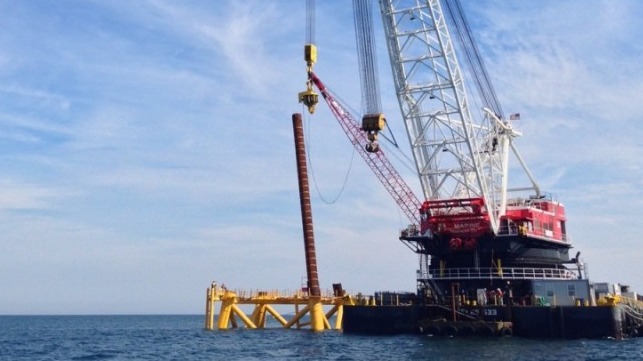Congress Ensures the Jones Act Will Cover U.S. Offshore Wind Sector

The U.S. Congress has passed the final version of the National Defense Authorization Act for FY2021, a sprawling 4,500-page defense policy bill that covers everything from servicemember pay to warship acquisition to weapons R&D. In every year since the Kennedy administration, the annual bill has passed Congress and entered into law.
As it always passes with broad bipartisan support, the NDAA also serves as a vehicle for high-priority amendments covering adjacent areas, including the maritime sector. This year, those amendments include financial relief for U.S. seaports, new rules for passenger vessel safety, and new language that ensures that the Outer Continental Shelf Lands Act (OCSLA) applies to offshore wind farms.
If the NDAA for FY2021 is signed into law, the new OCSLA clarification ensures that wind farms will count as U.S. points for purposes of the Jones Act, just like offshore oil and gas facilities. This means that all parties have certainty that foreign-flag vessels will not be permitted to carry goods between U.S. ports and renewable energy projects built on the U.S. Outer Continental Shelf. Foreign-flag service vessels like crane ships will still be able to install or repair offshore installations, as they have historically, so long as they do not carry goods between U.S. points.
"While the U.S. Department of the Interior has long believed that OCSLA applied to offshore wind development, recent statements by other government officials and those who sought to carve themselves out of U.S. laws has left some to question that fact and if U.S. investment in this market would be honored," said the Offshore Marine Services Alliance (OMSA) in a statement. "OMSA had advocated heavily for OCSLA provision, working with Congressional offices to ensure that Congress understood the importance of providing clarity, understood how offshore energy projects are constructed on a practical basis, and ensuring the language covered all activities related to offshore wind project."
The provision was a long time coming. According to OMSA, it is based on a bill sponsored 10 years ago by former Congressman Jeff Landry (R-LA), which passed the House in 2011 but never made it to the Senate floor. The amendment included in this year's NDAA was introduced by Congressman John Garamendi (D-CA), a longtime defender of the Jones Act and the American maritime industry.
“Offshore wind development will play a critical role in our nation’s transition to a clean energy economy,” Garamendi said in a statement. “Demand for offshore wind development in U.S. waters remains strong, and Congress has now ensured this burgeoning industry abides by federal laws and regulations affording critical labor, antitrust, and environmental protections, including the Jones Act."
As American shipowners and investors consider the construction of a brand new Jones Act offshore wind fleet, the OCSLA clarification brings certainty that high-value American-built vessels will not be priced out of the market by lower-cost foreign-flag operators.

that matters most
Get the latest maritime news delivered to your inbox daily.
"I can’t thank Congress enough for taking these measures which will incentivize this important market and give investments a positive way forward. Our legislators understood we must assure U.S. laws are clearly applied to U.S. offshore wind development, and today they acted with purpose," said Court Ramsay, CEO of liftboat and OSV operator Aries Marine.
However, the NDAA's future is not certain this year. President Donald Trump has threatened to veto the bill because it does not repeal certain liability protections for social media companies and other online forums, like Facebook, Wikipedia, Yelp, Airbnb, Craigslist and Twitter. If the threat is carried out, it would be the first time that the NDAA has been vetoed in six decades, and it is not known whether the House and Senate both have the two-thirds supermajority required to overturn the veto.
